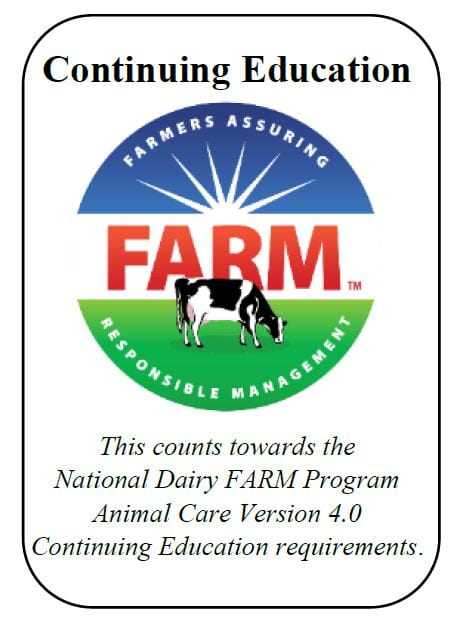Given the current COVID-19 crisis and the impact on dairy markets and demand, you may consider (or need to) get rid of some cows. Making the decision to cull and transport a cow off the farm is rarely an easy one, with both economics and emotions playing a large role. The decision needs to be based on what is best for both the farm and the cow, and the question should always be asked, is the animal fit to transport? According to the AABP (American Association of Bovine Practitioners), “fitness for transport refers to the animal’s ability to withstand transportation without compromising their welfare”. As part of the National Dairy FARM Program Version 4.0, each dairy farm needs a fitness for transport protocol and those involved in this decision need annual continuing education in this area. The objective of the fitness for transport protocol and training is “to ensure suitability for an animal to be culled and transported to market”.
As part of your protocol, you should be able to answer the following questions:
- How are employees trained to identify if animals are fit to transport?
- Who makes the final decision in which animals get culled?
- How are the animals transported off the farm?
- Do you record culling reasons and how?
Another major consideration when determining if an animal is fit to transport is whether she has been recently treated. To ensure proper antibiotic stewardship, the following additional questions should be answered:
- Which employees are trained to ensure withdrawal times have been met (or exceeded) before an animal can leave the farm?
- Are treatments records written down, and where? Including treatment date, animal ID, dosage, route of administration, milk and meat withdrawal periods, who gave the drug, drug name, and the duration of treatment.
- How are animals that are currently in their withhold period identified to prevent an error?
A recent study out of Canada (published in the Journal of Dairy Science) found that ~30% of the cows sold at cattle markets had poor fitness for transport, which led to reduced animal welfare and lower market prices for those animals. Further, a similar study found it could take an average of 82 ± 46 hours from when the cows left the farm until they were slaughtered (and this was without a crisis and unprecedented supply chain/processing disruptions). With this in mind, before any animal is transported, they should be rested, well-fed, and hydrated. Calves leaving the farm should all have received colostrum and milk (including bull calves), and water and starter (for calves ≥3 days old). Lactating cows should be milked just prior to transport to reduce discomfort. Further, never transport an animal that will be rejected by the pre-slaughter inspection at the processing plant. The AABP lists some conditions that would cause an animal to be rejected: an animal with cancer eye, a fever over 103F, drug residues, peritonitis, severe lameness or a fracture, unreduced prolapses, and a cow that is or has a high chance of calving on her way there.
If an animal must leave the farm and she is not fit to transport, euthanasia is the only option. On-farm euthanasia practices must adhere to AABP/AVMA guidelines, and should include consultation from your herd veterinarian, and follow your euthanasia protocol (as required by the National Dairy FARM Program) (look for an article on euthanasia in the coming months).
For more detailed information on fitness for transport recommendations, please visit the AABP site at: https://www.aabp.org/Resources/AABP_Guidelines/transportationguidelines-2019.pdf

